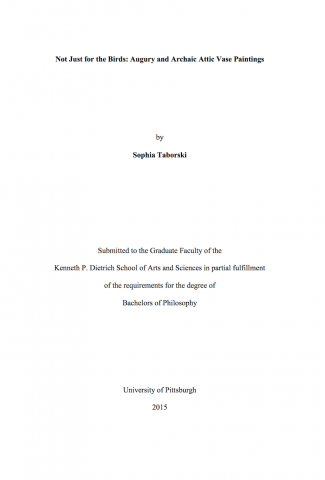
Undergraduate B. Phil. Thesis
With the exception of extispicy scenes catalogued by Francois Lissarrague and snake-eagle omens discussed by Diana Rodríguez Pérez, divination has been ignored by vase-painting scholars and of ancient religion scholars, only Michael Flower has touched on visual sources.
Despite this lack of attention by current scholars, acts of divination and birds that I argue ought to be interpreted as omens appeared on hundreds of black figure Attic vases in the sixth century. Most of these bird omens were painted behind men on horseback. Henri Metzger examined a subset of this group, the funerary Rider Amphorae, and concluded that the riders were cavalry and the eagle an attribute of Zeus, the patron god of the cavalry. The riders’ armor suggests that horsemen were hoplites and because of the prominence of augury in everyday life, the birds are best identified as ambiguous omens. These bird omens add a future temporal dimension and emphasize the uncertainties of battle. By doing so, the Rider Amphorae highlighted the virtues of the horsemen and eulogized them at the tomb. Other vases with men on horseback were used in the symposium where the moment of the journey provided a common experience which fostered bonding among the symposiasts. The moment of a man embarking journey joined by a bird omen corresponds to Babylonian omens, the British Museum tablet 108874 and the Summa Alu, and may be explained as an example of a wider Mediterranean understanding of divination. Examining augury and bird portents in Attic vases provides insight into both the layman understanding of augury and the vase painter construction of narrative.
